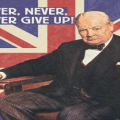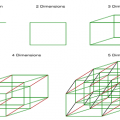【墨尔本PTE】【 PTE真题】PTE听力和口语一直是PTE口语考试中最重要的部分,今天墨尔本文波PTE培训学校给大家总结下PTE中的RL真题:
Renovation of Paris
Cities are interesting places. Some cities are carefully planned, built for a reason and reflects the needs of the people as it grows. Others are less conscientiously designed. Paris, for example, was originally founded in the 3rd century as a small village. And with every passing generation, it grew in size and importance. It grew from a medieval city to a modern city. But the transition was not always smooth. Emperor Napoleon III had to hire someone to oversee the rebuilding of Paris. The man he chose was Georges-Eugène Haussmann. In 1853, Haussmann began the process of renovating France’s capital city. His basic instruction was to bring light and air into the central districts, improve the sanitation in living areas, and make Paris a more modern, beautiful city. … Haussmann’s projects included the destruction of the old, medieval neighborhoods, whitening of streets, building large parks and public squares and addition of fountains and sewer lines. To add to all of this, the size of Paris had to be increased, doubled actually. And Napoleon III issued official decrees (法令)annexing(吞并)nearby suburbs to make them part of the city. One of the main priorities of this massive renovation was to connect all the districts together. If we think of Paris as a house, each district was its own room, existing essentially independently of the other districts. Napoleon III wanted it to be easier to travel between the most important district and decreed a sense of this being one unified city, not a serious of independent neighborhoods. So Haussmann created large avenues that connected the districts. More than that, he made all of the avenues look roughly the same. Buildings on a major avenue were required to be roughly the same height and style, and even had to use the same cream color stone for the façade. The result was to remove any local characteristics and create a uniformed Paris. For the first time, the city had a specific look. A style that people began to associate not with a district, but with Paris itself.





